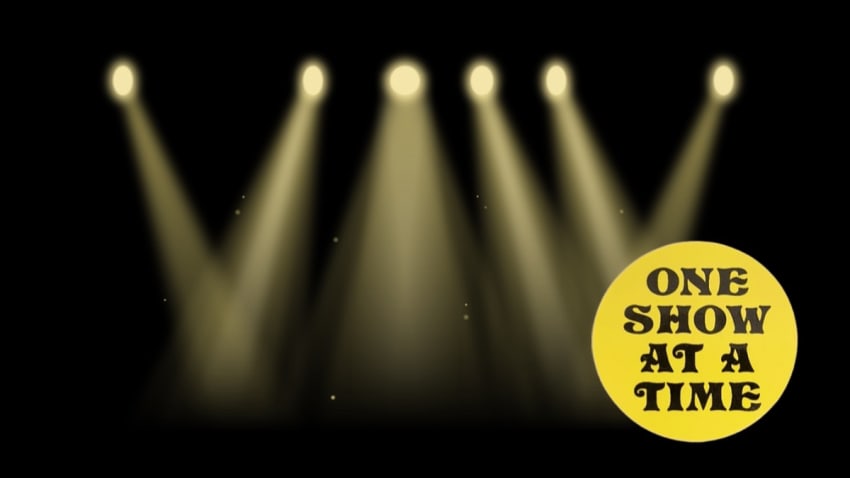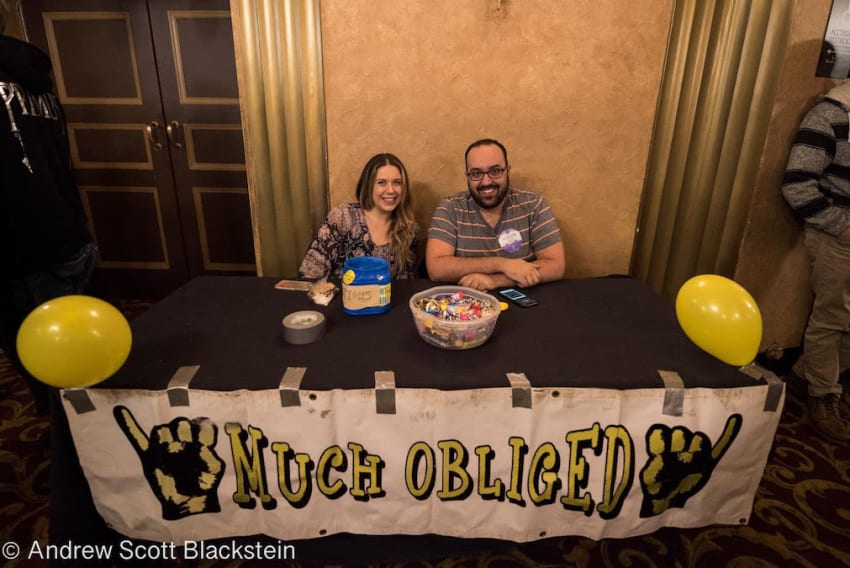
Twenty-some odd years ago, the lights went down at Roseland Ballroom and The Disco Biscuits took the stage for my very first live jam band experience. Although this was a new world to me, it was one that felt familiar and comfortable. The dance floor quickly became home and the faces surrounding me, family.
Unfortunately, parallel to this path ran my addictions, which spiraled as I followed bands around in search of belonging, euphoria, and yes — even love. What I’d come to find is everything I sought would be found in recovery.
The Bus Came By and I Got On
If you’ve been to a show, you’ve most likely seen a table set up boasting yellow balloons, smiling faces, candy, and a small crowd. Or maybe you haven’t — I had never noticed them, either, until I needed them.
The yellow balloon tradition began with the Wharf Rats, a group of Grateful Dead fans whose once recreational drug use had turned problematic. Finding other fans in recovery around Dead Tour was challenging. A group of fans from Philadelphia got connected through outside recovery groups and started using yellow balloons as a way to locate one another at shows. The yellow balloons they used as markers have since become the symbol of all sober communities within the jam band scene.

Thanks to the Grateful Dead, my generation grew up with multiple jam bands who range in style from cow funk to bluegrass to trancefusion; thanks to the Wharf Rats, my generation has had access to sober support at every concert I’ve ever attended.
Each band has its own group — see below — and at every show, volunteers set up a table with easy-to-spot yellow balloons. At set break, there’s a meeting where people share about the joys of seeing live music without substances.
- The Wharf Rats – Wharf Rats Official Facebook Group
- Phish – The Phellowship Facebook Group
- moe. – Happy Hour Heroes Facebook Group
- Widespread Panic – The Gateway (Clean & Sober Widespread Panic fans)
- The String Cheese Incident – Jellyfish Facebook Group
- the Disco Biscuits – The Digital Buddhas Facebook Group
- Umphrey’s McGee – Much Obliged Facebook Group
Anyone can be a member; you simply need a desire to enjoy live music without drugs and alcohol, stop by, and say hello!
One member of the sober Phish group, The Phellowship, says the community “helped him safely go on tour and protect his recovery.” He’s been sober for 18 years and has gone to 225 Phish shows in that time.
Members of the Umphrey’s McGee yellow balloon community, Much Obliged, have shared a running gratitude list with one another for years. One member couldn’t attend Phish’s Baker’s Dozen shows because his daughter fell ill, and he started the list in an effort to see the light in each day. Writing 10 things he’s grateful for each day has made him “become acutely aware of good things throughout [his] day that [he] can put on the list. Also, [he’s] gotten to know people really intimately based on their lists. It’s a beautiful thing to share with so many people together consistently for five years!”

Yellow balloon communities, like many friendships made at concerts, extend far past the encore.
Mama, Mama Many Worlds I’ve Come Since I First Left Home
As for me, finding the yellow balloon communities gave me new life in the world of live music. It gave me a new home base at every venue and a new family — literally. Since entering into recovery near the end of 2013, I’ve attended countless shows, made new friends, and even met my husband at a yellow balloon table at a Phish MSG set break.
I’ve come to learn that even some of my favorite musicians are sober; Eric Clapton and Trey Anastasio have spoken publicly about their hardships with drugs, and both have opened separate rehabilitation centers to help others struggling with addiction.
If you’ve yet to check out the sober music scene, I can’t recommend it enough. Getting to enjoy live music without the distraction of drugs and alcohol is divine and waking up without a hangover never gets old.
Pam Stepansky is a Jewish American writer, humorist, and self-care enthusiast who is passionate about recovery, philosophy, and what it means to be human. She resides in Wayne, PA with her partner, Adam, and their spirited tuxedo cat, Gumbo.
[Sponsored by Single And Sober]







